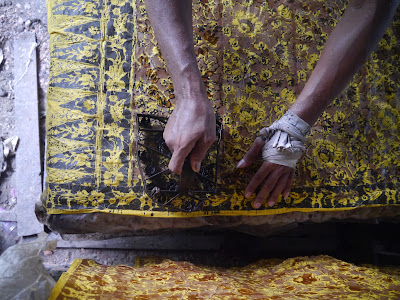Kemeja Kitab
Again we stumbled upon another large Ottoman talismanic shirt (jama) with extracts from the Qur'an and prayers, translated to Malay at the Islamic Arts Museum Malaysia as kemeja kitab. This time it was in Whitworth Gallery, Manchester in the UK.
The Talismanic shirts were found throughout the Islamic World. Muslim warriors would wear them under their armour.
They reminded me of Anthony Reid's book Southeast Asia in the Age of Commerce, 1450 - 1680, where he claimed that batik was a replacement for tattooing as a talisman and status marker post Islamisation. That the Muslim Acehnese had to extirpate tattooing among the northern Sumatrans they converted. And there's no evidence of tattooing among Muslim Malays and Javanese, when tattooing was a thing in this region. Recently, I found a paper claiming that the word batik has its root from Proto-Austronesian "bacik", which means tattoo.
I was also reminded to a conversation we had with a batik artisan in Jogjakarta who claimed that batik is the Malay word 'kitab' diterbalikkan/reversed. 🤷♀️



Comments
Post a Comment